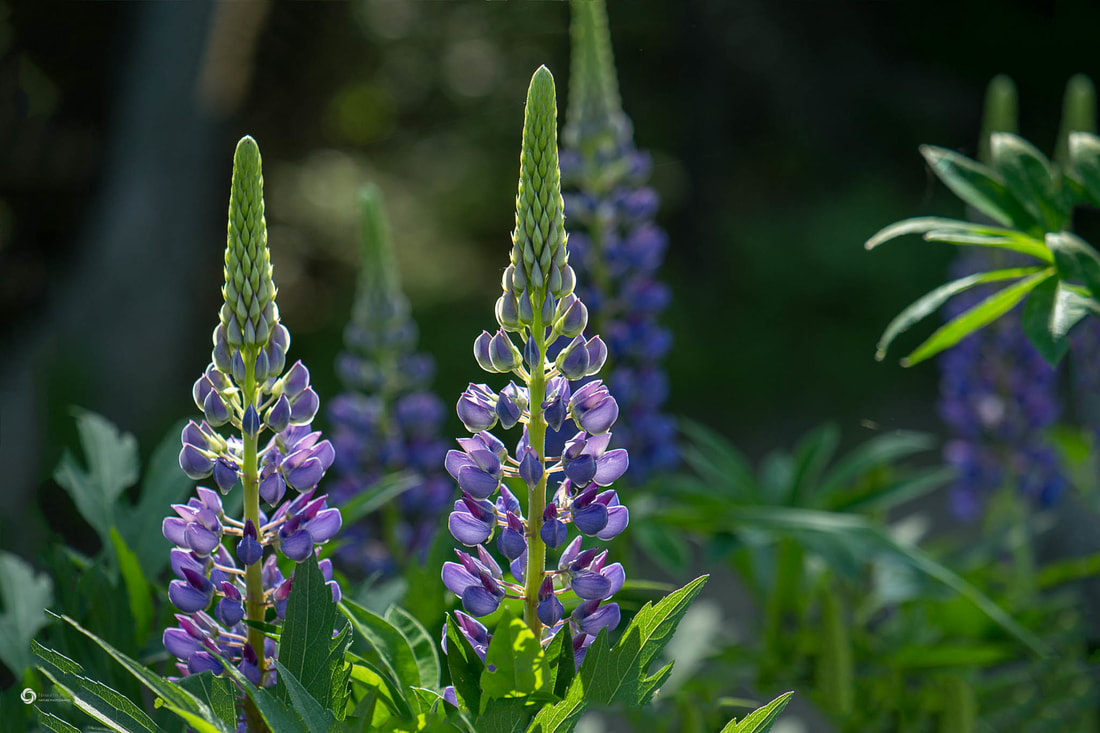How to Grow and Care for Lupines
Lupines grow wild throughout Maine blanketing roadsides and filling ditches with color in late spring and early summer. Although the wild version of lupines are typically shades of white, pink and purple, cultivated versions include brilliant red and shimmering yellows. The lupines above are wild lupines that I transplanted to my flower bed.
How much sunlight do lupines need?
Lupines prefer full sun for 6 to 8 hours a day, but will grow in partially shades areas. The excpetion to the rule is that newly planted lupines do best if they are grown in a shady location for the first summer and transplanted to sunny location in the fall.
What kind of soil do lupines need?
Lupines prefer cool, moist, slightly acidic soil with good drainage. Till to a depth of eight to 12 inches and remove all foreign objects from the soil. Amend with a generous layer of compost or aged manure and work it into the top six inches of soil. Add peat moss to the mixture to increase acidity if necessary.
How do you plant lupine seeds?
To start your lupines, you will need to prepare soil in a shaded are. Plant the lupine seeds to a depth of ½ inch and cover with soil. Firm down lightly to secure the seeds. Water to moisten the seeds and keep the area moist until seedlings emerge in 14 to 28 days. You will need to grow the young seedlings in shade for the first summer and transplant them to a sunny location in the fall. As an alternative you can dig up wild lupines and replant them in your garden. Make sure you have the landowner's permission before digging wildflowers!
How much water do lupines need?
Young lupine seedlings need moist oil to thrive, but once they have established a strong root sytem they can survive on less water and even tolerate dry soil. However, lupines thrive with one or two inches of rain a week and benefit from supplemental water if rainfall is inadequate.
Water your lupines once or twice a week or whenever the soil feels dry to the touch 1 to 2 inches below the surface.
Water your lupines once or twice a week or whenever the soil feels dry to the touch 1 to 2 inches below the surface.
When do you transplant lupines seedlings to a sunny location?
Burpee Seed recommends transplanting your seedlings to your permanent location in the fall. Water well until seedlings are established. Although your lupine plants may not appear to grow at this time, they are developing a strong root system to support next year's blooms.
When do lupines bloom?
Lupines bloom in late spring or early summer. However, newly planted lupines may not bloom in the first year. They may bloom in the fall or skip the season entirely and bloom the following psring.
Should you cut lupines back?
Lupines can be cut back to the ground level once the blooms fade. This may force a second flush of blooms in the fall. Otherwise, cut the foliage back after the foliage is killed by frost in the fall.
